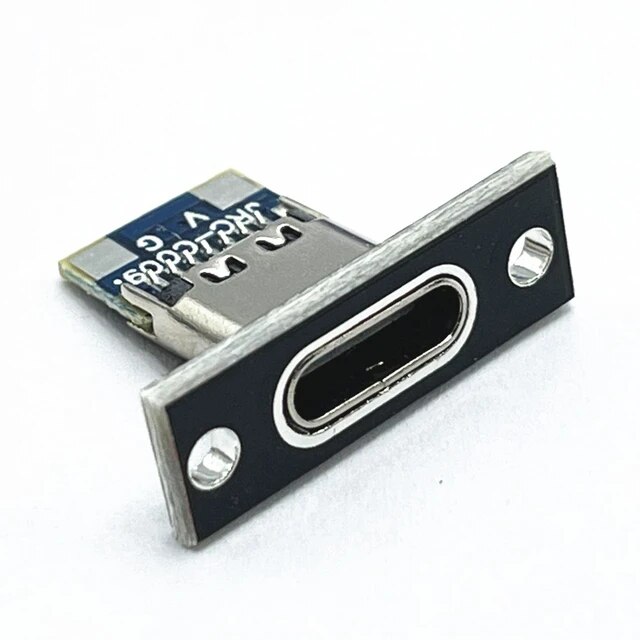So, picture this: you’ve just scored a bunch of those dirt-cheap USB-C connectors from your favourite online marketplace. You’re feeling pretty pleased with yourself because, hey, they’re cheap, and they look cool, right? But then reality hits you like a ton of USB bricks – these little guys aren’t as perfect as they seem.

Sure, they’ve got a USB socket, and they spit out 5 volts like it’s nobody’s business. But there’s a catch. The maximum current they can handle is as limited as a Monday morning caffeine intake. And don’t even get me started on the fact that they refuse to play nice with your shiny new USB-C gadgets.

But fear not, my fellow tech enthusiasts, for there is a solution! We’re about to embark on a journey of DIY greatness to upgrade these humble USB-C connectors into powerhouses of versatility.
First things first, we need to get our hands on the USB-C connectors with the data pins broken out. It sounds fancy, but trust me, it’s just a matter of finding the right product listing. Once you’ve got those bad boys in your possession, it’s time to roll up our sleeves and get to work.

Grab yourself a couple of 5.1K Ohm resistors – you know, the ones that always seem to be hiding at the back of your electronics drawer. We’re going to connect these resistors between each data pin and ground. It’s like giving our USB-C connectors a little boost of brainpower.

But we’re not done yet. Oh no, we’re just getting started. Next up, we need to short the data pin with a neighbour CC pin. It’s a bit like playing matchmaker for our connectors – bringing them together in perfect harmony.

And just like that, folks, we’ve done it! With a few simple tweaks, we’ve transformed our budget USB-C connectors into lean, mean, power-supplying machines. Now you can plug in your USB-C gadgets with confidence, knowing that you’re drawing the maximum available 5 volts of current.

So go ahead, power up your projects, charge your devices, and bask in the glory of your upgraded USB-C connectors. Who knew that a few resistors and a bit of know-how could turn something cheap into something Smart?
